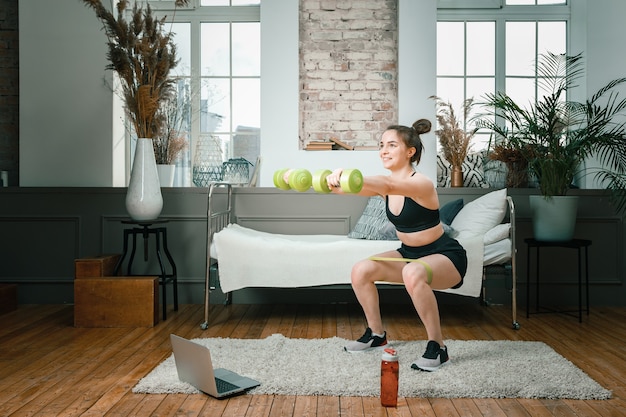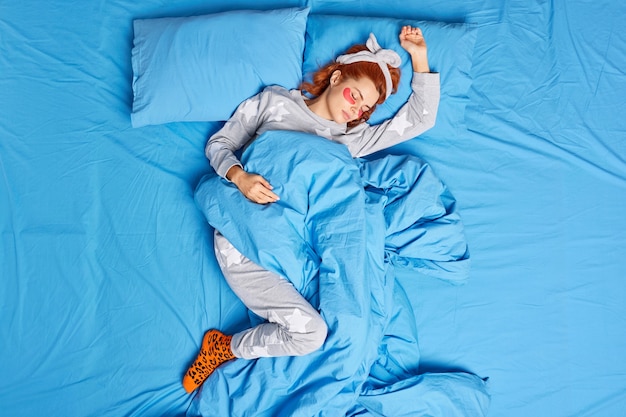Finding time for sport and fitness can be challenging in today’s fast-paced world. This article is for those who want to make positive changes without leaving the house.
Whether you are a busy professional, a parent on parental leave, or someone who prefers their privacy. These practical and effective tips are designed to help you lose weight and improve your well-being.
1. Creating a balanced diet plan
Your journey to losing weight at home starts in the kitchen. A balanced diet is essential for weight loss and overall health.
Recommendations:
- Variety is vital: Include a variety of fruits, vegetables, lean proteins, and whole grains. Different colors of fruit and vegetables usually represent other nutrients, so try to have a ‘rainbow’ on your plate.
- Portion control: Use smaller plates and bowls to reduce portion sizes and not feel restricted naturally. Understand portion sizes and learn to read nutrition labels.
- Water intake: Drink plenty of water throughout the day. Sometimes, thirst is confused with hunger. Avoid sweetened drinks and choose water, herbal teas, or water with herbal infusions for hydration.
- Mindful snacking: Choose healthy snacks and avoid eating out of boredom or stress. Keep healthy snacks such as nuts, seeds, and fruit readily available.
Examples:
- For example, swap high-calorie snacks such as nuts or yogurt for healthier ones.
- Plan meals to avoid impulsive, unhealthy eating.
- Include protein in every meal to keep you feeling fuller for longer.

2. Incorporating home workouts
You don’t need expensive equipment or a gym membership to stay fit. Home workouts can be just as effective.
Do the following:
- Body weight exercises: Pull-ups and squats can be done anywhere. These exercises can be modified to suit your fitness level.
- Online resources: Many options are available, from high-intensity interval training (HIIT) to gentle yoga.
- The key is consistency: Do at least 30 minutes of physical activity most days of the week. Remember that consistency is more important than intensity in the beginning.
- Be active throughout the day: Incorporate more physical activity into your daily routine. This could be climbing stairs instead of taking the lift, doing housework, or even dancing to your favorite songs.
Examples:
- Set up a small exercise area at home to keep motivated.
- Try yoga or Pilates to improve both physical and mental health.
- Use household items such as water bottles or tins as weights.
3. The magic of a balance pillow
- Often neglected, a balance cushion can change the course of your home fitness routine.
- The benefits of a fitness pillow:
- Improves body stability: using a balance pillow during squats or sit-ups can strengthen your body’s postural strength. This increases instability, which makes the muscles work harder.
- Versatile: It can be used for various exercises and even sitting to improve posture. It is perfect for beginners and experienced athletes, offering different difficulty levels.
- Easy to store and use anywhere: It’s an excellent tool for those with limited space who want to add an extra challenge to their workouts.
- Improves balance and coordination: Regular use of a balance cushion can improve overall balance and coordination, which is helpful in training and everyday activities.
Examples:
- For example, include a balance cushion in your daily sitting routine to improve posture.
- Use it during yoga classes to increase the level of difficulty.
- Try standing on it while doing simple exercises to improve balance.
4. Mindful eating and stress management
Weight loss is not just about physical activity but also about mental health. Be aware of your daily habits, especially those related to eating. Do you find yourself reaching for a box of biscuits after a long, hard day at work? Or, in the evenings, are sweetened drinks or alcohol on the menu instead of tea?
Think about yourself:
- Mindful eating: To control your eating habits, focus on your food, chew slowly, and savor every bite. Meals without side work and devices can improve digestion and prolong satiety.
- Stress management: High levels of stress can lead to the risk of overeating—practice relaxation techniques such as meditation or deep breathing. Hobbies and activities that relax you can be beneficial.
- Emotional eating awareness: Understand what triggers emotional eating. Keeping an eating and mood diary can help you identify patterns and develop healthier coping mechanisms.
Examples:
- Keep a food diary to keep track of your eating habits and emotional triggers.
- Make time to relax and pamper yourself.
- Practice mindfulness techniques daily to reduce stress.

5. Sleep and weight loss
Adequate sleep is an essential but often neglected aspect of weight loss, beauty and overall health.
How to get healthy sleep:
- Regular sleep: try to go to bed and wake up simultaneously every day, even on weekends. Having a consistent sleep routine can improve sleep quality.
- Create a calm environment: Ensure the bedroom is quiet, dark, and peaceful. If necessary, consider using blackout curtains and earplugs.
- Avoid stimulants: Limit caffeine and screen time before bed to improve sleep quality. Also, avoid heavy meals shortly before bedtime.
- Understand the role of sleep in metabolism: Sleep deprivation can affect hormones that regulate hunger and appetite, thereby increasing calorie intake.
Examples:
- Create a relaxing bedtime routine like reading or taking a warm bath.
- Keep track of your sleep habits to understand your sleep patterns better.
6. The role of hydration in weight loss
Hydration is essential for maintaining a healthy body weight and general well-being. Adequate water intake promotes normal metabolism, detoxification, and appetite control.
Benefits of drinking water:
- Water as a metabolism booster: Drinking water can temporarily speed up metabolism and help to lose weight.
- Appetite regulation: Sometimes, thirst is confused with hunger. Drinking water before meals can help control meal size.
- Detoxification: Water helps to flush out toxins and promotes normal digestion of food.
- Benefits of proper water intake: Proper hydration improves skin health, energy levels, and kidney function.
Examples:
- Carry a water bottle with you throughout the day.
- Add fruit or herbs to the water for a refreshing taste.
- Drink a glass of water on waking to kick-start your metabolism.
7. Tracking progress and staying motivated
Tracking progress is essential to motivate and evaluate the effectiveness of weight loss strategies. Don’t expect quick results, but settle for long-term work.
Don’t forget:
- Set realistic goals: Short-term and long-term goals will help you focus and motivate yourself. Ensure these goals are specific, measurable, achievable, relevant, and time-bound (SMART).
- Celebrate small successes: Acknowledge and celebrate your small achievements to stay motivated. This can be as simple as exercising for a week or consistently choosing healthy snacks.
- Seek support: Connect with friends, family, or online communities for encouragement and support. Sharing your journey can provide motivation and valuable feedback.
- Visual progress tracking: Use methods such as progress photos and fitness apps to track your progress visually. This can be incredibly motivating and a great way to see how far you’ve come.
Examples:
- Use a journal or app to track your diet, exercise, and progress.
- Share your goals and achievements with a supportive friend or group.
- Set up a reward system for yourself when you reach certain milestones.
8. Customizing your home environment for success
Your home environment can have a significant impact on your lifestyle and habits. Adapt your rooms to your new habits, such as limiting access to sweets or creating a small room with fitness equipment.
Also:
- Organize your kitchen: Store healthy foods in a visible and accessible place while storing less healthy foods further away. A well-organized kitchen can inspire you to cook and eat healthily.
- Create a space for exercise: Set aside a small space at home equipped with essential exercise tools such as yoga mats and resistance bands. A visible and attractive environment can remind you to stay active.
- Thoughtful decor: Use calming colors and plants to create a stress-free environment conducive to a healthy lifestyle. The atmosphere of your home can affect your mood and motivation levels.
- Limit temptations: Protect your home from unnecessary temptations. For example, if you like sweets, don’t keep them in the pantry.
Examples:
- Arrange your fridge so that healthy products are at eye level.
- Choose a corner of the living room for quick daily exercise.
- Use motivational quotes and pictures in your workout room to stay inspired
Conclusion
Getting well at home requires a holistic approach that includes diet, exercise, mental wellbeing, and a supportive environment. By incorporating these tips into your daily routine, you can achieve weight loss goals and improve overall health.
Remember that the road to a healthier you is a marathon, not a sprint. Persevere, be patient, and embrace the journey. Visit us at Medluxform.lv for more health and beauty tips, and embark on this journey of change with confidence and enthusiasm.

Labdien, mani sauc Alens, un esmu aktīvs puisis. Man patīk brīvajā laikā izbraukt ārpus pilsētas, un atpūsties klusmā. Labprāt izvēlos riteni, nevis mašīnu, kā arī esmu par tīru valsti.

